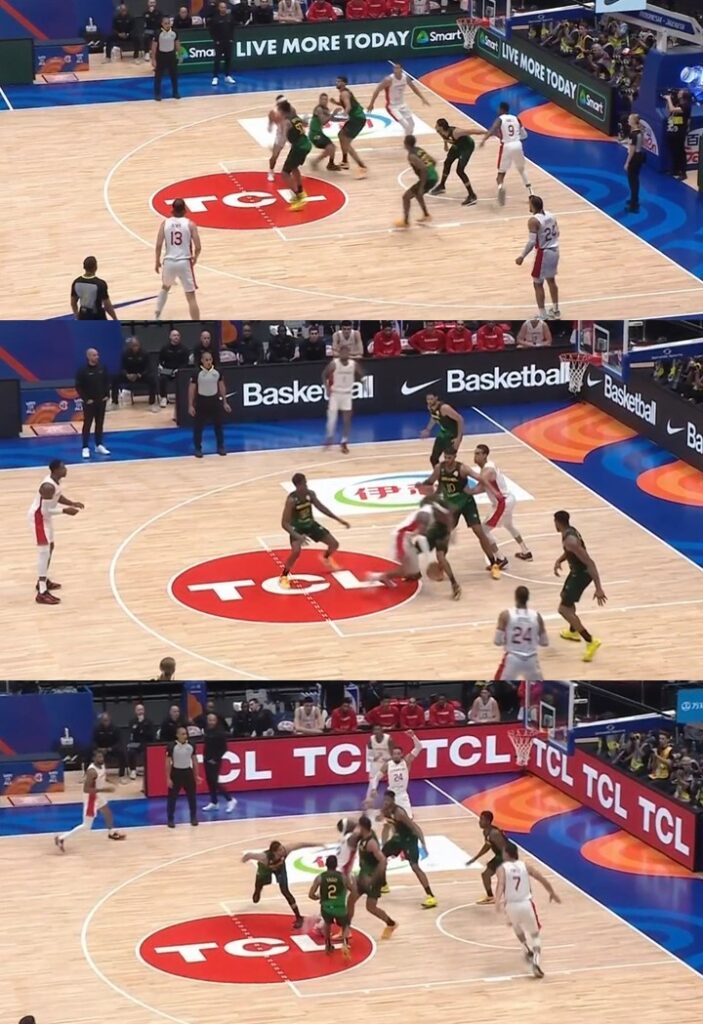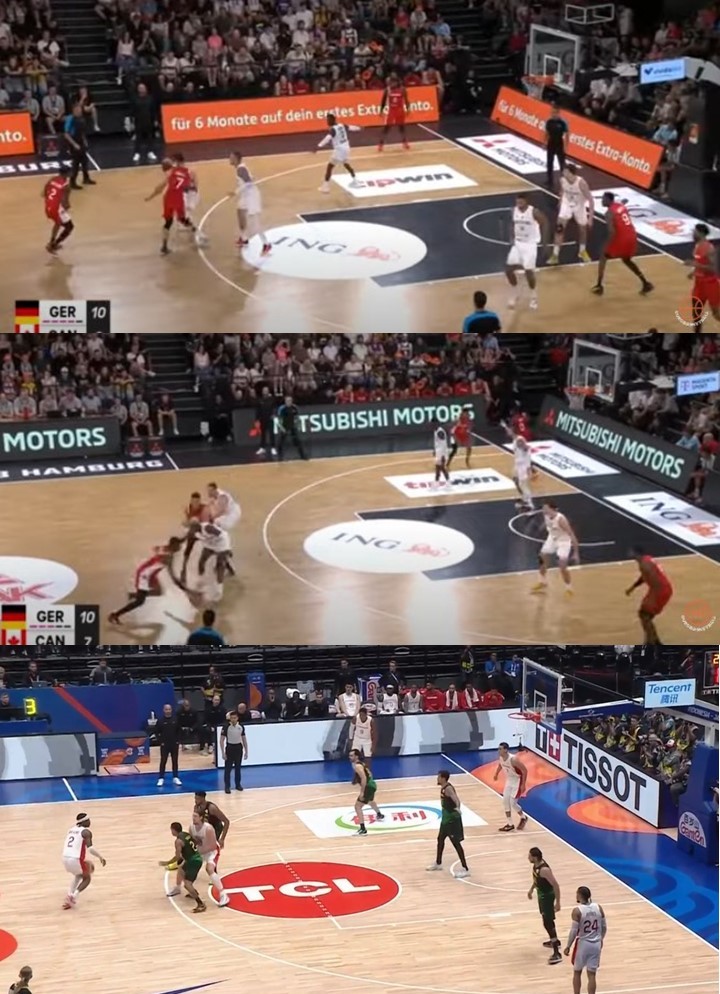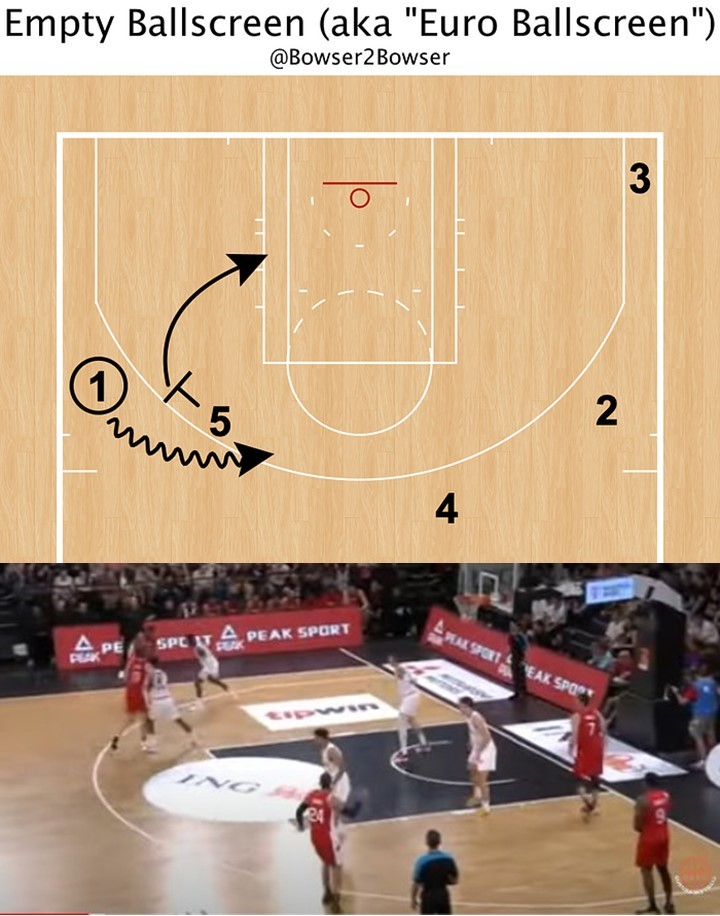Paris 2024 Olympics Preview: The Jordi Fernández Retrospective
Analyzing Jordi Fernández's adjustments at the 2023 World Cup
The post Paris 2024 Olympics Preview: The Jordi Fernández Retrospective first appeared on Raptors Republic.
Professional basketball, like many sports, is ruthlessly results-driven. The heavy emphasis on recent success that is burdened on the game’s brightest stars and their “legacies” also extends to the coaching staff, with the Head Coach under an immense amount of pressure to win and get their team to perform. Every strategic adjustment they make (or don’t make in the eyes of the fans) is heavily scrutinized and narratives about their lack of tactical acumen form at the first sign of failure. It’s a demanding and grueling job where the rewards are only enjoyed by a select few.
Naturally then, after leading Canada to their first ever medal at the FIBA World Cup (and 1st medal at a global international event since the 1936 Olympics), Jordi Fernández has been showered with praise. He navigated a short ramp-up time heading into training camp, established modern offensive principles and leaned into Canada’s stout perimeter defensive en route to a 9-4 overall record last summer (6-2 at World Cup, 3-2 in exhibition games). When push came to shove, Fernández produced.
“Jordi connects so well to people. […] It’s not even close, he is way better than me. His connection and personality and all that other stuff are off the charts and, and I learned a lot just listening to him”
Coach Mike Brown, from Es Baraheni’s “Jordi Fernandez: The Player’s Coach”
By all accounts, Fernández was a model “players coach”. He was able to connect deeply with the players, while still remaining demanding and authoritative when the team needed a wake-up call. For example, the broadcast caught Fernández ripping into his players in two consecutive timeouts after a lackluster start against Latvia in the final game of the first round.
While I can’t comment on the nature of Fernández’s interpersonal relationships with the players, what I do have is the film from last summer. I’ve compiled a shortlist of the most impressive tactical adjustments Fernández and the coaching staff made along the way at the 2023 FIBA World Cup, on both the offensive and defensive ends.
Creating Space for SGA in the PnR
After finishing 2nd in MVP voting last season, Shai Gilgeous-Alexander’s meteoric rise to superstardom has finally caught the attention of the masses. With his ability to drive to the rim, constantly creating rim pressure and generating advantages, SGA will undoubtedly reclaim his role as the offensive engine for Canada Basketball at the Paris Olympics, a role he thrived in (67.5 TS%!) last summer in Indonesia and the Philippines.
Like most superstar talents in the NBA, Gilgeous-Alexander exploits one-on-one coverages in isolation. During the 2024 NBA Playoffs, he scored a ridiculous 1.14 PPP on 10.2 isolation possessions a game. That is truly unheard of playoff volume and efficiency in isolation as Bowser mentions below.
If we all know how dynamic SGA is offensively in isolation, opposing coaching staffs certainly do as well. And it showed in their defensive coverages throughout the World Cup campaign. In the early exhibition games against Germany, HC Gordie Herbert was ultra aggressive in clogging Shai’s driving lanes, especially out of the PnR. That meant bringing extra defenders to fill in gaps from one pass away, helping off of Canada’s more inconsistent shooters in Dillon Brooks and RJ Barrett. The fact Germany was comfortable helping off of Kelly Olynyk, an elite shooter, from one pass away just shows how high of a priority stopping SGA was for the Germans.

Brazil meanwhile was even more aggressive in their help defense in their second-round matchup with Canada, sending extra defenders to dig from all angles and daring Canada’s supplementary players to hit open 3’s (they shot 6/23 from 3 vs Brazil). Along with slowing down the pace on offense, Brazil’s gameplan worked as they grinded out a 69-65 win

Now an argument can be made that Fernández could have settled and taken what the defense gave him. After all, wide open C+S 3’s are decent looks for the likes of Lu Dort, Nickeil Alexander-Walker, Kelly Olynyk, RJ Barrett and Dillon Brooks. However, Fernández proactively adjusted in-game, modifying the alignment of the players in search for higher percentage shots for Canada’s offense.
The first of Canada’s adjustments came in the halfcourt. Fernández’s heuristic was to maximize the space Shai had to operate out of the PnR by sacrificing the spacing of the off-ball players. In earlier possessions that I highlighted above, Canada had went to more “Spread PnR“, playing out of the common “5-Out” alignment that has taken the NBA by storm. The issue is while the paint is wide open (green highlight below), there’s more traffic on the perimeter and as we saw, opposing teams were gladly helping off of Canadians stationed at the wings (red highlight below). If you can’t get to the paint in the first place, having all that open space is meaningless.

Fernández understood this and his first adjustment was to flatten PnR’s involving Gilgeous-Alexander. Notice how Canada is in more of a “4 Out” alignment in the screenshot below, with the 3 off-ball players flat along the baseline (1 in dunker spot, 2 in corners). That 3rd defender from one pass away that was clogging the lane from the wing (Olynyk’s defender highlighted in red in screenshot above) is now shifted down to the baseline by a couple steps. While a couple steps doesn’t seem like a lot, in the context of help defense, it creates a massive vacuum of space for Shai to drive to and get downhill.

If you’re more of a video person, here’s a couple examples of the flattened PnR’s run for SGA, including his game winning shot to send Canada to the Olympics.
The next thing the coaching staff tried was to run more empty side PnR’s, while bunching up the 3 off-ball Canadians even more than what is typically done. Again, by sacrificing the spacing of the off-ball players, SGA and Powell (the screen setter in this action) have more space. In this case it’s a whole side of the floor to themselves.

Finally, Fernández continued to push the envelope in the semi-final matchup against Serbia, with an adjustment to set vertical screens at half-court to spring Shai downhill for some early offense.
Playing “Small” Ball
While Canada raced passed teams at the World Cup with a blistering offense (4th in PPP, 2nd in OFFRTG via hackastat), the defensive end was more of a struggle (18th in DEF PPP, 15th in DEFRTG). Don’t just take it from me (or these rudimentary “advanced” numbers), Canada Basketball GM Rowan Barrett also echoed similar statements earlier this summer.
While Canada’s perimeter defensive personnel was strong, defensive Achilles heel was the interior defense. From a personnel standpoint, Dwight Powell and Kelly Olynyk are not bruising bigs who can deter opponents from shots at the rim in drop. In addition, Canada’s two better rim protecting bigs (Kyle Alexander and Zach Edey) saw limited run throughout the tournament due to more glaring holes in their game. Against Spain in the second round, Canada struggled immensely with Willy Hernangómez rolling to the rim, who erupted for 18 PTS in the 1st half.
Given Canada’s roster construction and POA defensive talent, Fernández’s adjustment was to double down and lean into his players’ strengths by playing small. In the second half against Spain, he started Dort in place of Olynyk and elected to switch every on-ball screen (mirroring Nick Nurse’s adjustment in the 2021 Olympic Qualifying Tournament vs Greece). Making use of Powell’s mobility, Dort and Brooks’ (and to a lesser degree Barrett’s) defensive versatility and Gilgeous-Alexander’s length to front the post, Canada was able to stifle the Spanish offense by limiting paint touches and forcing Spain to go deep into the shot clock time and time again. In the Bronze Medal game against the USA, Fernández decided to start the game playing small with the same Dort-for-Olynyk substitution.
In fact, the 5-man lineup of Gilgeous-Alexander/Dort/Brooks/Barrett/Powell, which led the Canadian comeback against Spain was the most effective 5-man lineup at the 2023 World Cup. They recorded a ridiculous +49.6 per 40 min net rating, powered by an elite offense (143.8 OFFRTG) and defense (86.7 RTG). Small sample size aside, it was clear that playing small was Canada’s most effective lineup construction.
Now, playing small isn’t an invincible silver bullet that guarantees a win. Against Brazil, Jordi played small for the majority of the 4th quarter as Canada was outscored 24-13 in the final frame. Once Powell had fouled out, Fernández went to an offense/defense substitution pattern with Kelly Olynyk and Melvin Ejim, essentially playing 5 “smalls” defensively down the stretch (which is something they first did in the second exhibition game vs Germany!). Notice though that it’s playing small that dooms Canada on the game-sealing bucket from Yago dos Santos (1:41 in video below). By switching the initial off-ball screen (“Ram” screen), Canada has SGA defending Bruno Caboclo. When Santos gets a step on Brooks on the perimeter, SGA who is busy trying to front the post get sealed by Caboclo and there’s no help at the rim from Canada. In these international tournaments, sometimes leaning into your team’s strengths isn’t enough to win.
At the SMNT Training Camp this year, I asked Fernández about the general success he found playing small last summer and whether he would continue to go to it at the Olympics. He was understandably coy about his tactics this summer, but this was his response (edited for clarity and brevity).
“You see our versatility, right? […] It’s not what you do, it’s how you do it, and the guys are working hard and their working with a purpose. We can play with 5 smalls, we can play with 2 bigs, I think that even if we play “small”, I would not call Lu Dort or Dillon Brooks small because, you know, their big and they play big and their physical. So, we’re in a good place, I like the different things we can do, and that’s how you’re a very good team”
Jordi Fernández (Full audio here)
Playing small and switching everything has been Canada’s initial defensive adjustment for years. I would expect that to continue at the 2024 Paris Olympics when the situation calls for it as it leans into the strengths of the players on the roster. There’s been a lot of understandable worry and contention about the lack of frontcourt size in the SMNT player pool, especially since Zach Edey bowed out. Playing small and feverishly defending the perimeter to limit rim attempts could be one of many stopgap solutions (alongside bringing more C depth in Birch/Kabengele) that Fernández turns to until more talent arrives through the pipeline.
Keeping Kelly Olynyk Out of PnRs
Coming into the tournament, I thought Kelly Olynyk would have been the second most impactful player on the team, given how well his offensive tools (movement shooting, passing & processing) translated to international basketball. Instead, he played the least amount of minutes out of all the starters (22.2 MPG) and had a disappointing showing overall.
Olynyk’s PnR defense deficiencies were a weakness that opposing teams continued to exploit. Canada was especially vulnerable when Olynyk was the lone big on the floor. So, how did Fernández adjust?
The point of emphasis from the Canadian coaching staff was to put Olynyk in positions to succeed on the defensive end. That meant keeping him out of PnR’s as much as possible. Fernández cleverly moved Olynyk to defend a spot-up guard/wing while sliding Dillon Brooks up to defend the C and the majority of PnR’s. If teams wanted to continue to target Olynyk, they would have to give isolation possessions to a player not well-suited for it or bring a smaller screener into the fold. Most of the time, opposing offenses conceded their hunting of Olynyk and continued on with their normal actions, playing right into Canada’s hands.
As an aside, I thought this huddle was insightful for understanding the tradeoffs Fernández is willing to accept on defense when Olynyk is switched onto a guard on the perimeter. Rather than double or play the “shift” defense, Canada would shrink the floor behind Olynyk to deter a drive, conceding an an off-the dribble jumper if necessary. It’s a standard defensive scheme that NBA teams like the Dallas Mavericks employed to protect Luka Dončić and Kyrie Irving on defense in this year’s playoffs.
Adding Progressions to Foundational DHO Actions
NBA offenses are constantly evolving and in recent years, DHO-centric motion offenses have established themselves as the modern day meta. No team has relied as heavily on the dribble handoff like the Sacramento Kings, who have ran the most DHO’s per possession in NBA history according to Joe Wolfond.
It’s obvious then where the former Sacramento Kings assistant drew inspiration from when establishing the SMNT’s offensive identity. The defining Canadian offensive set at the 2023 World Cup, was the “Point Series”, a collection of corner offense actions that all hinge upon using a big as the playmaking hub at the elbow. From my hand tracking, I counted 6 variations that the SMNT ran last summer (my favourite being the “Maggette Cut” added for Barrett against Latvia, 0:58), with many of the most creative variations run as Canada went deeper into the tournament and opposing teams had more opportunities to scout Canada’s foundational actions. One benefit of a six-week long commitment from all the players is it allowed Fernández to develop a mature offensive playbook, and continue to tinker with it by adding more progressions and layers.
Given that the “Point Series” was so foundational to Canada’s offense last summer, I’m excited to see what wrinkles Fernández adds and tinkers with in the Olympic campaign.
The post Paris 2024 Olympics Preview: The Jordi Fernández Retrospective first appeared on Raptors Republic.
